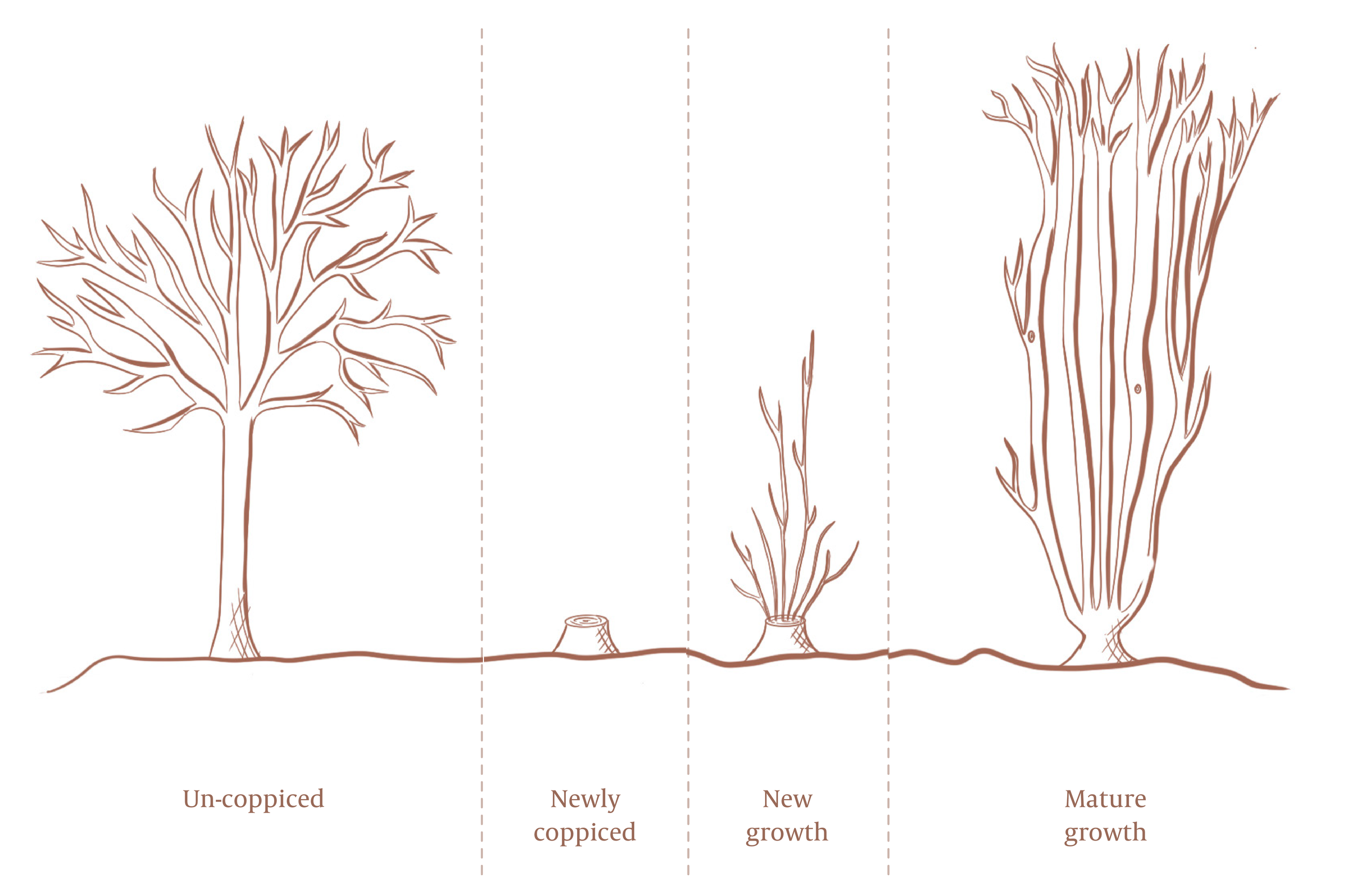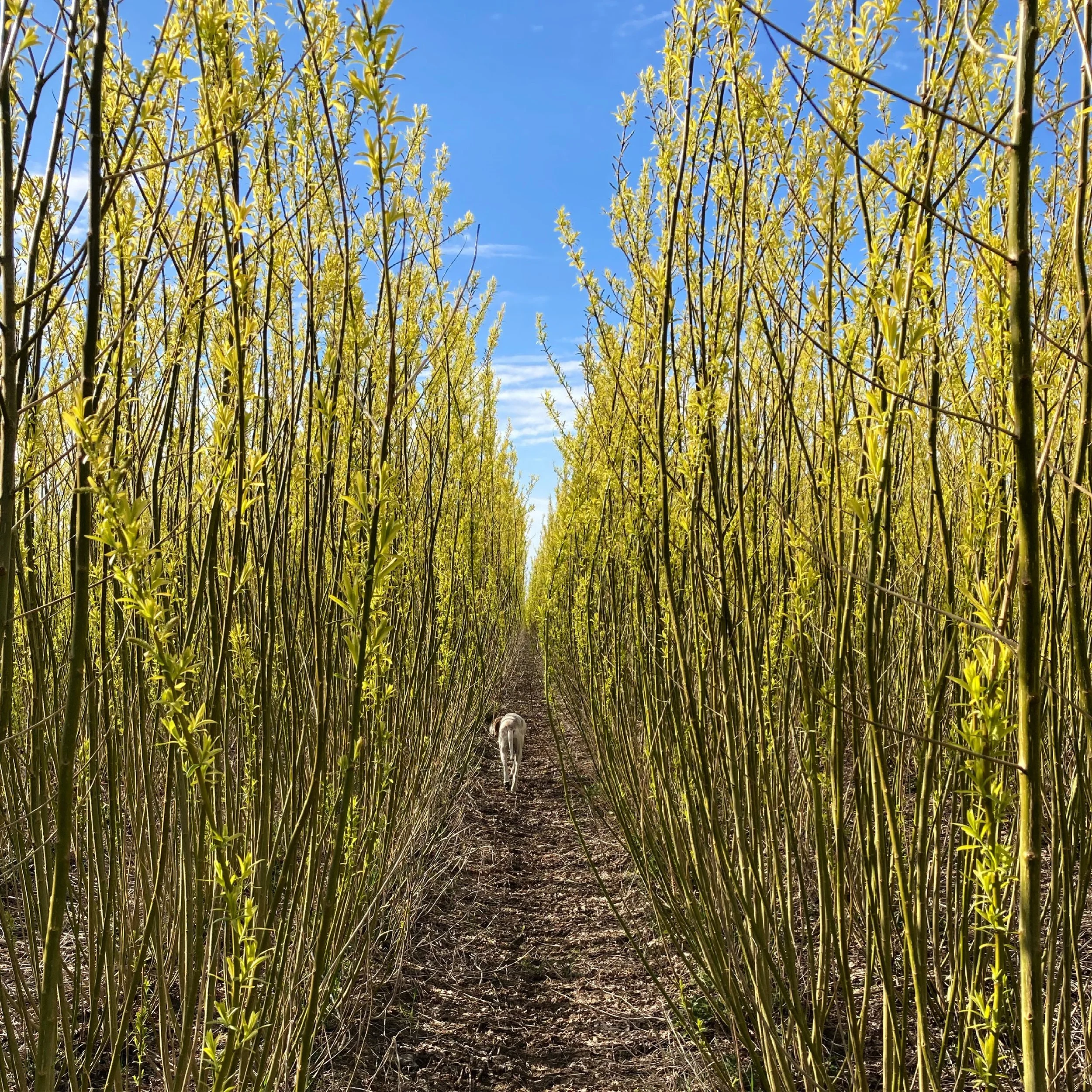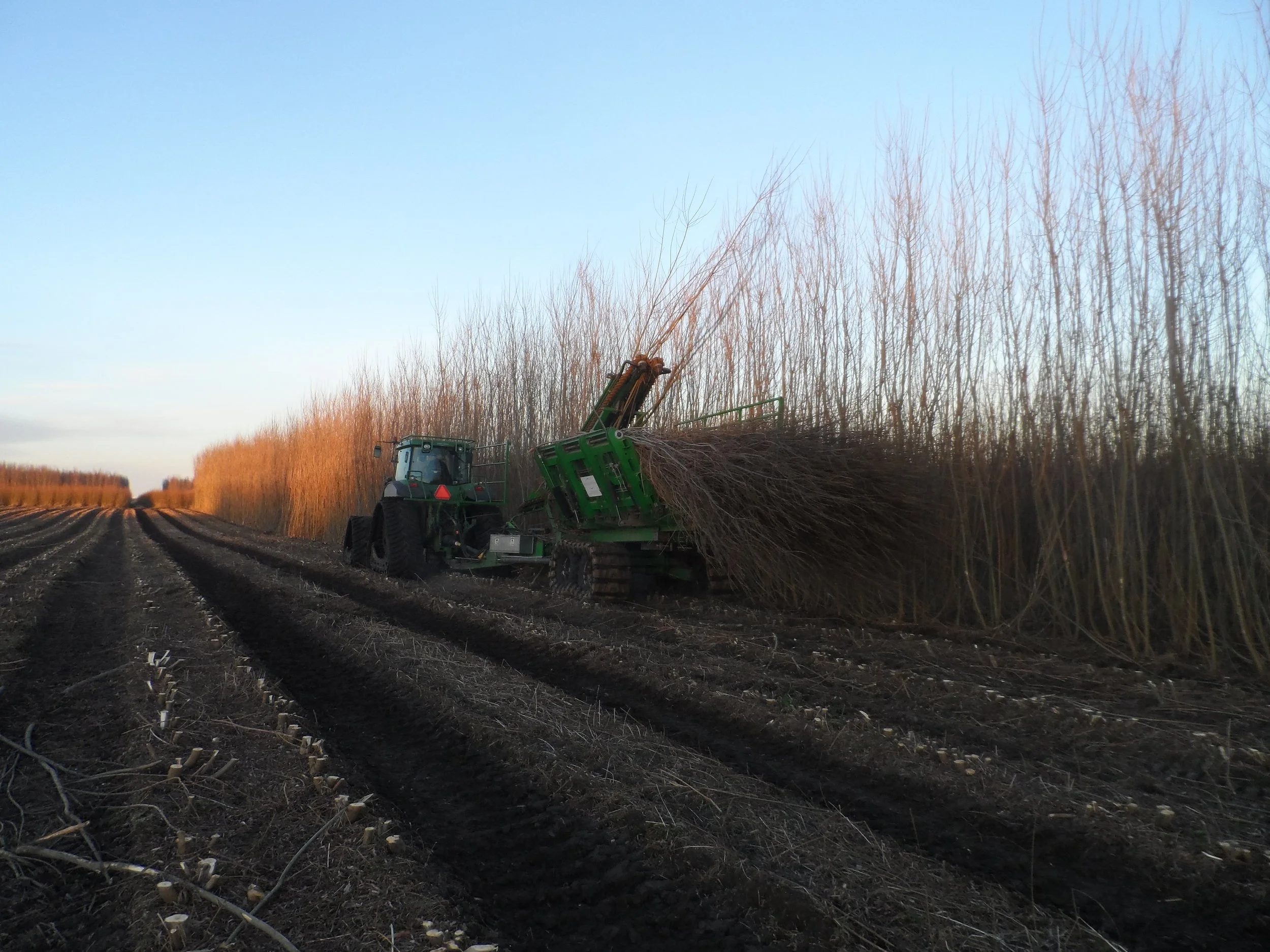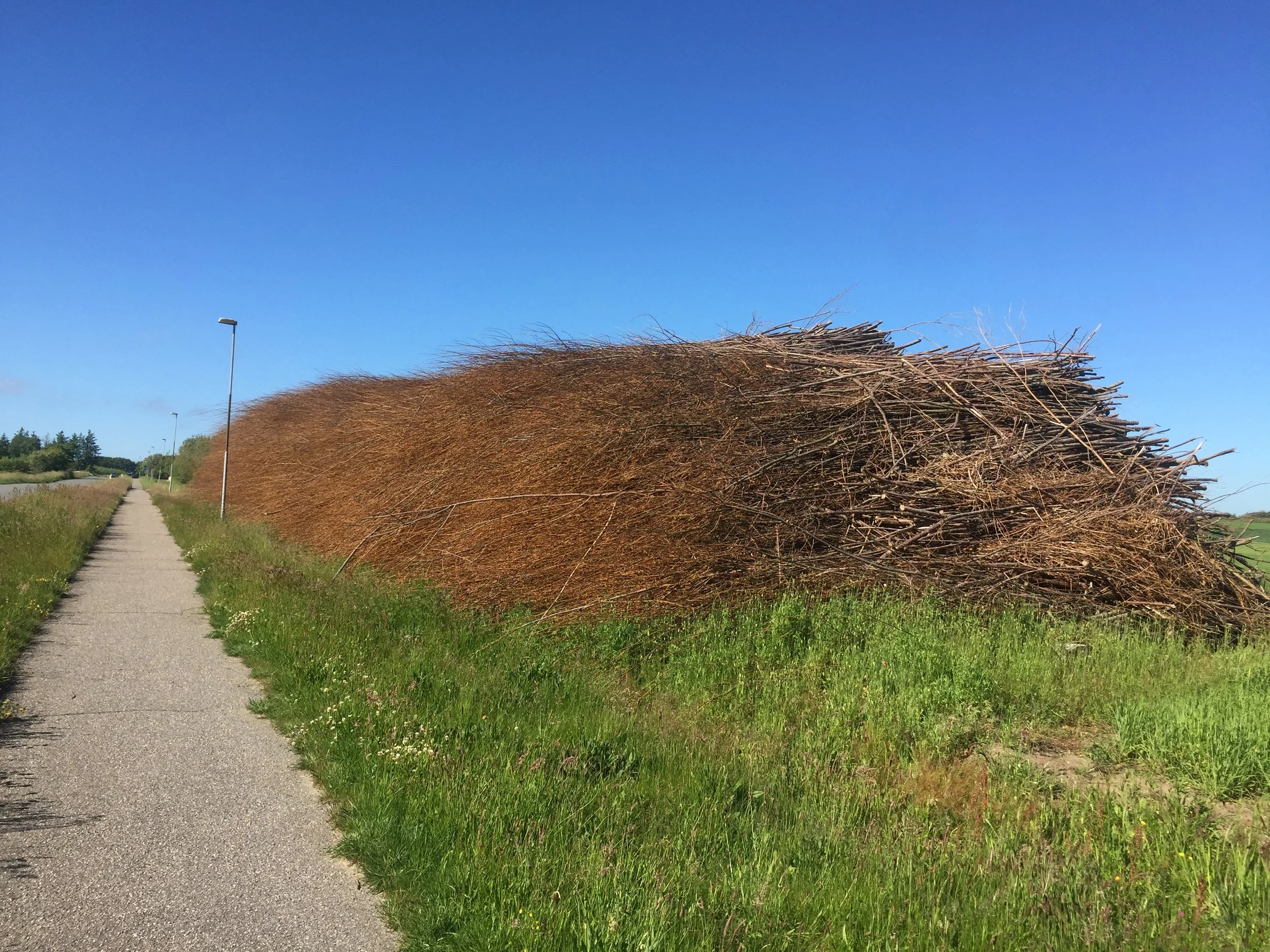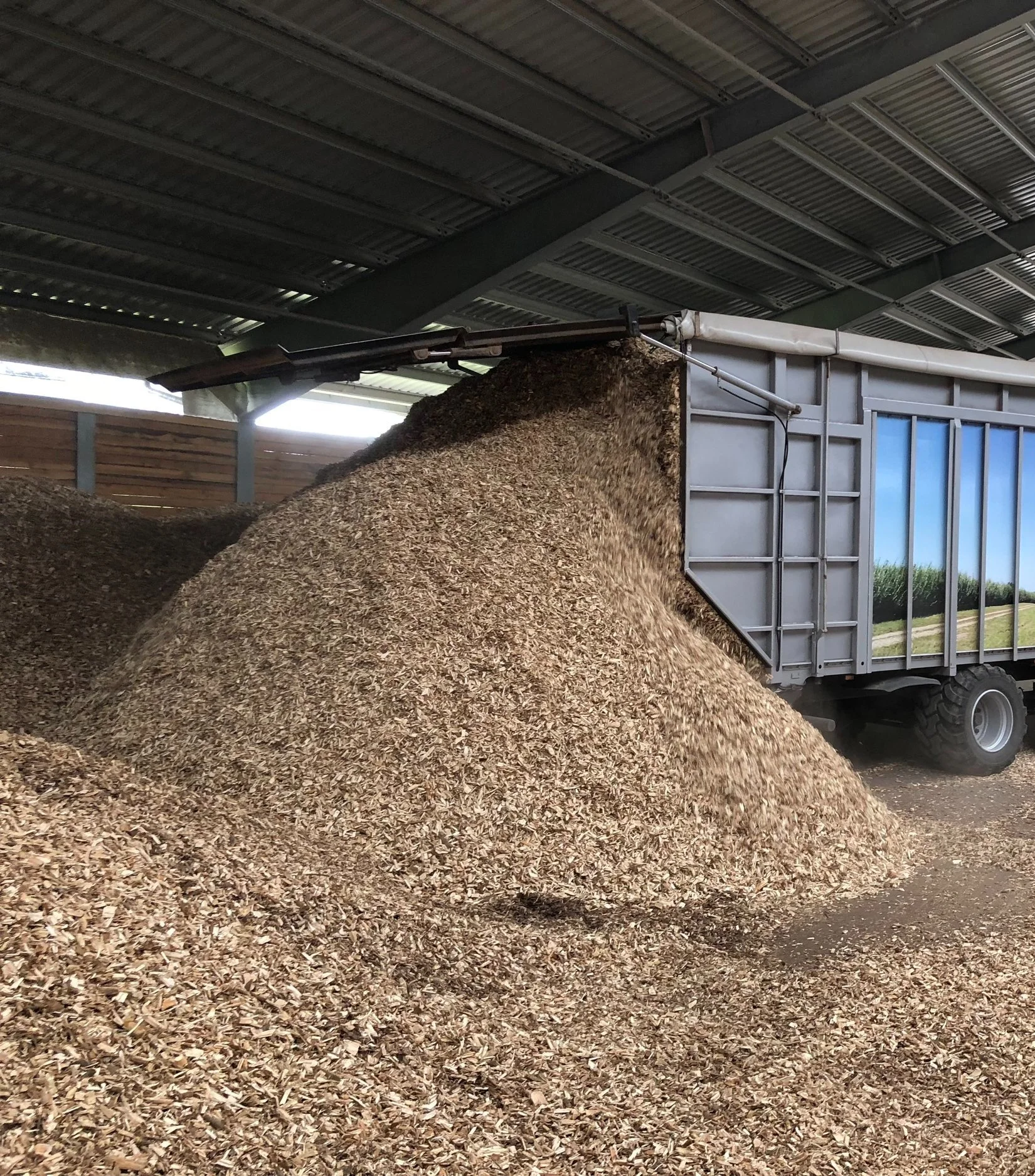01 About Willow
How is willow cultivated?
To enhance the efficiency of willow cultivation, researchers and growers have selectively bred certain varieties to minimize imperfections such as kinks and knots, ensuring that the stems grow as straight as possible. These specialized varieties of willow, Salix Viminalis and Salix Dasyclados, have been developed to meet the demands of industries that require uniformity and high-quality material. The optimal crop rotation is typically considered to be 4 - 8 years, while a variety such as Salix Alba has a crop rotation of + 10 years.
As a perennial crop, only the stems are harvested, leaving the stump and root mass intact. This supports the soil ecosystem and mycorrhizal relationships that capture carbon, preserve nutrients and foster biodiversity.
Why is willow nicknamed the Nordic bamboo?
Following harvest, willow regenerates naturally by sprouting multiple new shoots directly from the remaining stump, eliminating the need for replanting and fostering subsoil biodiversity. A controlled wood production, which allows for the use of a line cultivator to keep the plantation clean from weeds, and no root shoots ensures that the trees do not become invasive.
↑ Willow plantation ― Courtesy of PileByg
Using willow for carbon capture
Willows can grow up to 2 - 3 meters per year and rapidly absorb CO₂ from the atmosphere. This rapid growth allows willow to sequester carbon more rapidly than most comparable biogenic materials, and as a perennial crop, the root system supports long-term soil carbon storage.
A willow plantation can absorb approximately 10 - 15 tons of CO₂ per hectare per year, which is more than many slower-growing tree species. Oak and beech have a longer rotation period (80 - 120 years) and store more carbon in their biomass over time but absorb CO₂ at a slower rate. Coniferous trees (spruce and pine) have a moderate growth rate and can store around 5 - 10 tons of CO₂ per hectare per year, depending on growth conditions. 1
In the shift from burning the biomass - a process that releases stored carbon into the atmosphere - to utilizing it as a building material, we aim to lock the carbon within building materials.
1 Matthesen, P., & Heding, N. (1994). (rep.). Energipil (pp. 1-2). Retrieved March 21, 2025, from https://cms. ku.dk/upload/application/pdf/31/e7/31e76cfc/03.01-01S_3_1_1.pdf.pdf.
↑ Willow ― Courtesy of PileByg
How does willow contribute to biodiversity?
Willow plays a significant role in ecological services, particularly through phytoremediation and habitat creation. It efficiently absorbs pollutants from the soil and atmosphere, making it valuable for environmental restoration efforts. Once the initial establishment is completed, minimal intervention is required. Unlike annual crops where soil is tilled and habitat is disturbed on a seasonal basis, perennial crops allow communities of flora and fauna to develop and take hold. This lack of disturbance allows for the natural development of mosses, grasses, flora and fungi on the forest floor, ultimately enhancing species’ richness and biodiversity.
↑ Ground cover in a willow plantation ― Courtesy of SHL
Is the willow tree resilient to climate change?
The Nordics are experiencing unprecedented challenges with periods of drought, groundwater and sea level rise. Willow, once established, is resilient in wet and dry periods.
Pesticides can in principle be omitted, and fertilization can ideally be done with livestock manure, sludge from municipal sewage treatment plants or fiber (residue from biogas plants). Willow trees are now grown organically in several places in Denmark. However, plantations can, though rarely, be affected by insect infestations, which require intervention if the wood is to be used for industrial processing. Annual crops, in comparison, require continuous application of fertilizer, which, due to the limited root network, poses a risk of leaching of nutrients into groundwater and watercourses.
↑ Willow harvest ― Courtesy of PileByg
↑ Natural drying of willow ― Courtesy of PileByg
A different kind of farming
Growing willow trees on agricultural land is one way to create more sustainable agriculture. New processes include placing the harvested willow stems in field stacks in order to take advantage of the natural drying of the wood before further processing. Sun, wind and the small green leaves (that sprout on harvested stems) draw moisture out of the wood. It is also an effective shortcut to minimize energy consumption for drying the wood.
↑ Debarked willow stems ― Courtesy of PileByg
What is holding willow back?
Willow is cultivated locally in various places in Denmark, yet its production faces several challenges. Positioned between the harvesting cycles of traditional agriculture - which typically allows for annual or biannual harvests - and the much longer rotations in forestry, willow cultivation lacks a clearly defined framework. This has resulted in the absence of support programs and incentives for growers, meaning the great potential of willow as a shortcut to more sustainable agriculture, construction, and climate solutions remains untapped.
↑ Willow wood chips ― Courtesy of PileByg
Need for regional scaling
The environmental and climate benefits of willows, combined with the growing demand for more sustainable wood sourcing, provide a societal rationale for initiating a strategic effort to expand willow cultivation. Existing knowledge and technology in cultivation and harvesting must be scaled up and industrialized, while the latest research in wood modification should be translated into practice and implemented in professional construction. This requires national prioritization and framework for the cultivation and processing of willow, similar to the initial support programs for wind energy (which is now commercially sustainable). Fastgrowing tree species like willow represent a vast untapped potential, offering nature and climate benefits for society as a whole, economic advantages for agriculture, and valuable, more sustainable raw materials for the construction industry.
↑ Willow plantation ― Courtesy of PileByg


